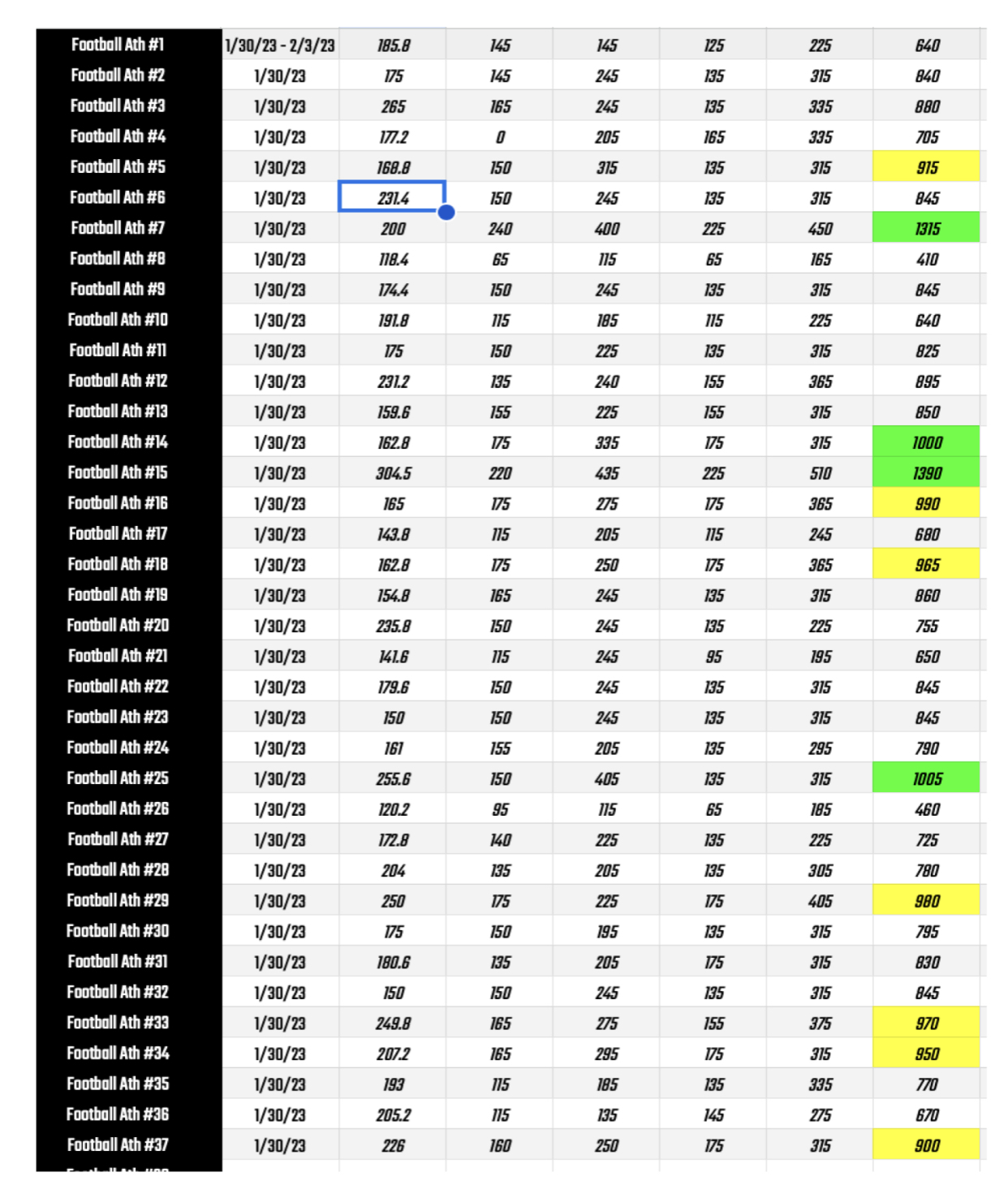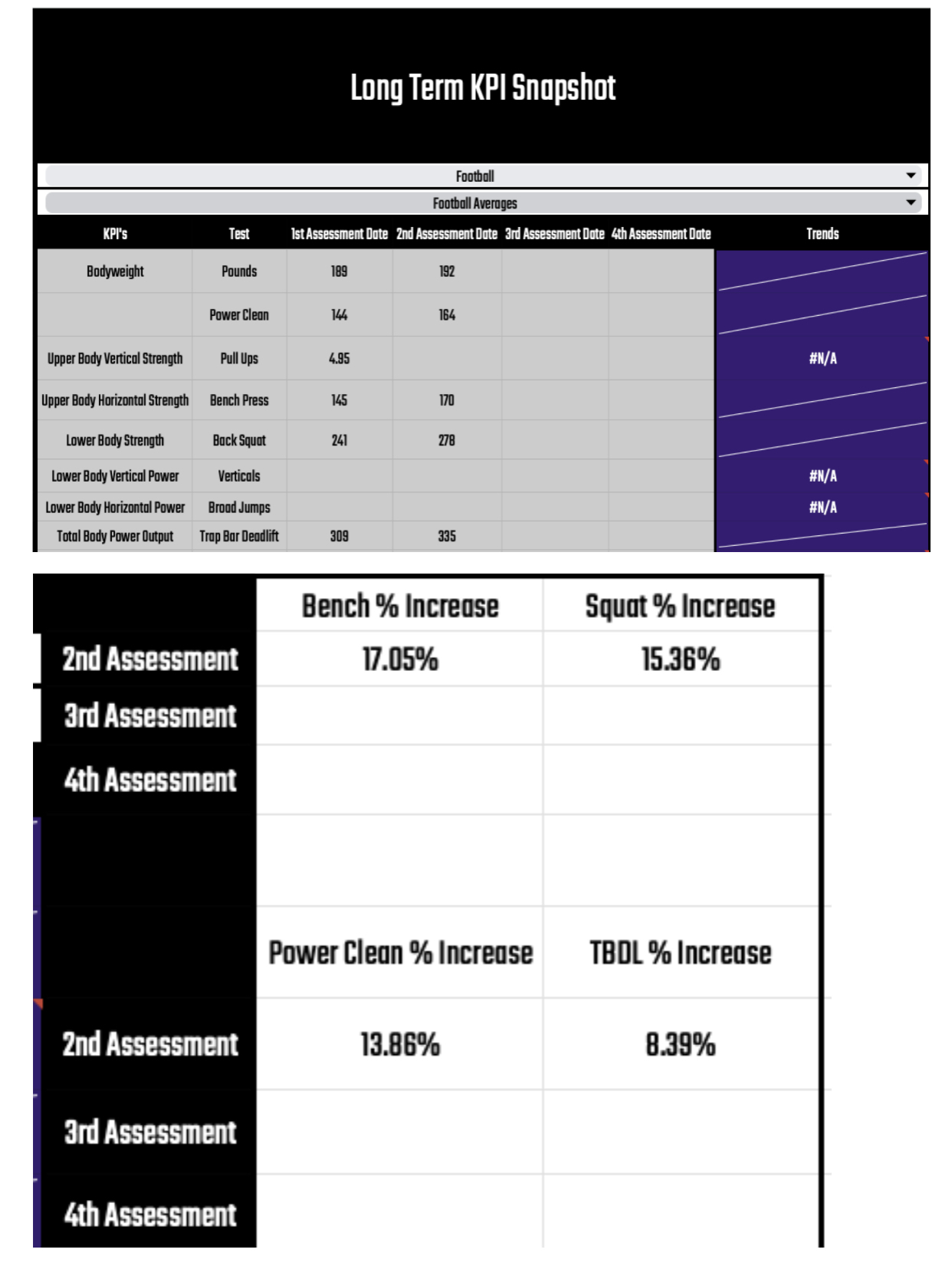As strength & conditioning coaches, we spend a fair amount of time with data and being able to understand it from a logical and meaningful perspective. We typically understand the ‘why’ behind our methodologies and the reasoning behind every single metric we record. As a former sport coach, I often thought about a few of these questions in my head:
“Why is this test important?”
“Why should I care if Billy increased his squat by 10 lbs.?”
“Why should I care that our left guard can run a 10 yard fly in 1.37s?”
“Is it helping them in their sport?”
Sport coaches don’t (normally) care if Johnny’s squat went up 15 lbs. from 10 weeks ago—they care if they can keep Johnny on the field/court in order to win!
Here are a couple of ways we can better serve our sport coaches:
- Communicate & Understand What Your Sport Coach Wants
There can be a gap of miscommunication between you and a coach if you don’t fully understand what they are wanting to accomplish in the program, or the coach is vague about what exactly they want to accomplish. Communicate, talk! Let them talk about what exactly they are looking for in your program.
For example, a basketball coach may want to see more explosiveness out of their athletes. Great! Explosive in what sense? As in jumping? Expressing more force into the jump so they can jump higher? Driving through the paint to make a layup? Those are all different qualities of a sport that could mean “more explosive.”
Now, once you have gotten down to what they want, develop a plan, bring in reliable and accurate data, and get results.
- Measure Exactly What You Need To Measure
Let’s use the same basketball example: Our coach wants the players to become more explosive in the way they play/move on the court. You now need to bring in a plan and metrics to measure exactly what is needed to measure. Bring in results that tell exactly what you did to make them more explosive.
“We worked on plyometrics, acceleration and deceleration, and got stronger in the last six weeks. As a team they increased their jumps by a total of 1.5 inches, they have cut down their time from the baseline to half court by 0.76 seconds, and their overall strength has increased by 10.2%.”
This tells me that they have gotten more powerful, faster, more robust, and stronger in preparing them for their sport. This increases the validity in your program, and notice that nothing went too deep into detail. We didn’t talk about normative data, the stretch shortening cycle, or the eccentric phase of the triphasic block that you just ran. It was simple, short, got results, and continued on with the program.
Quickly, you are identifying trends and patterns in your data that now is exactly what the coach wants. It is a win-win for you and your coach.
- Help Make Informed Decisions in the Sport
I fully believe that strength & conditioning coaches make the difference in the wins/losses for any sport program. We can help make informed decisions about details in the sport. If you have the resources (such as GPS), you can determine player load and how much stress is actually being placed on an athlete/team during practice throughout the year. VBT (Velocity Based Training) can help determine an athlete’s 1RM on a daily basis and exactly how fast the weight needs to be moved. There are several opportunities for coaches to help improve a sport program.
For example, I had an opportunity to experiment with our Dashr system with our girls 4 x 100m relay team, which was ranked 12th in West Tennessee Division 1 AA this year. We tested them by doing a 5-yard build into a 40-yard fly, from there we took the fastest four girls and put them into the 4 x 100m. That is making an informed and logical decision with data. I didn’t get into the MPH they ran or their 10-yard fly split, but it was enough to make a decision of who exactly needs to be on the 4 x 100m team. This relay team also placed 6th at the sectional meet, and consisted of two freshmen, a sophomore, and a junior. It is that important.
Another example: Attendance. Are athletes showing up regularly? Are there trends that we can address? Is there something that needs to be changed practice-wise? Is there something that needs to be changed weight room-wise?
If it is important enough, you’ll track it. From there we can begin to see the importance of data.
- Create Visuals of Your Data
Coaches don’t want to see this:

This is overwhelming to coaches who just want to make sure their athletes are getting what they need in order to win. What I have done is create a snapshot of the data being collected that is easy to look at. Visuals should be easy to look at.
Here are a couple examples of data between two assessments in my football offseason program:

This tells me an overview of what exactly is going on. Over a 12-week period, we had an increase in Bench by 17.05%, Squat by 15.36%, Power Clean by 13.86%, and Trap bar Deadlift by 8.38%—all utilizing a 3RM in this system between our 1st and 2nd assessment. We have an increase in our strength to bodyweight ratio, a 3-pound increase in weight, and increase in our main lifts as a whole.
Is it always perfect? No absolutely not; however, it is important to recognize and bridge the gap about what we do as strength coaches and making the data meaningful to where it becomes important enough to make decisions from the data itself. Taking this idea even a step further, if we are doing our jobs to the fullest extent, athletes will improve overall. So, we could keep a list of KPI’s (Key Performance Indicators) and express the KPI’s to sport coaches of what exactly they are looking for in the program.
Coach Rasberry is a current educator & strength coach. Recently, he has entered the job hunting search to land a potential full-time strength & conditioning position at the high school level. Coach Rasberry is CSCS certified, RPR Level 1, & USAW Level 1. If you have any questions for Coach Rasberry, you can contact him through email: jonrasb@ut.utm.edu.



